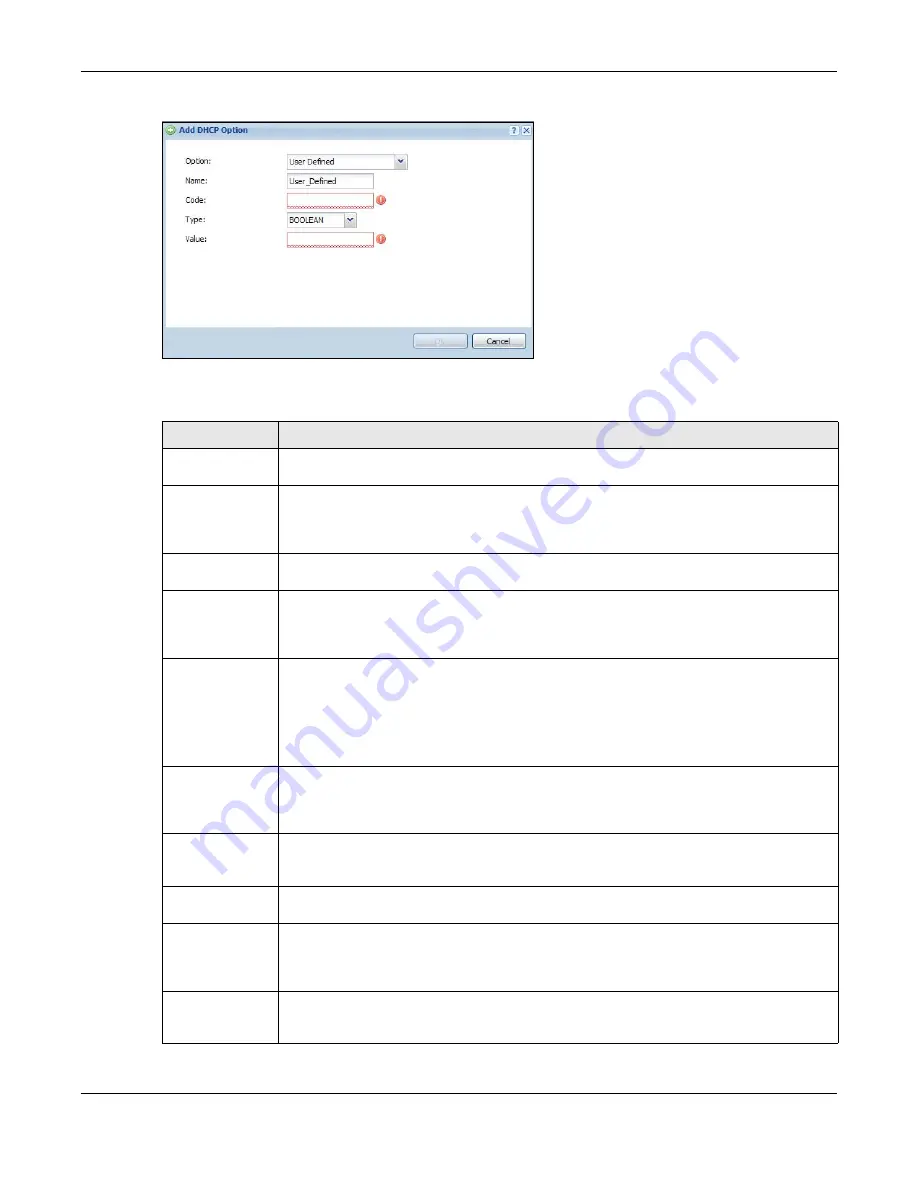
Chapter 10 Interfaces
UAG5100 User’s Guide
131
Figure 85
Configuration > Network > Interface > Ethernet > Edit > Add/Edit Extended Options
The following table describes labels that can appear in this screen.
Table 54
Configuration > Network > Interface > Ethernet > Edit > Add/Edit Extended Options
LABEL
DESCRIPTION
Option
Select which DHCP option that you want to add in the DHCP packets sent through the
interface. See Table
for more information.
Name
This field displays the name of the selected DHCP option. If you selected User Defined in
the Option field, enter a descriptive name to identify the DHCP option. You can enter up to
16 characters (“a-z”, “A-Z, “0-9”, “-”, and “_”) with no spaces allowed. The first character
must be alphabetical (a-z, A-Z).
Code
This field displays the code number of the selected DHCP option. If you selected User
Defined in the Option field, enter a number for the option. This field is mandatory.
Type
This is the type of the selected DHCP option. If you selected User Defined in the Option
field, select an appropriate type for the value that you will enter in the next field. Only
advanced users should configure User Defined. Misconfiguration could result in interface
lockout.
Value
Enter the value for the selected DHCP option. For example, if you selected TFTP Server
Name (66) and the type is TEXT, enter the DNS domain name of a TFTP server here. If
you selected the Time Offset (2) option, the type is Boolean and you have to enter a
Boolean value which should be either 0 or 1, where 1 interpreted as true and 0 is
interpreted as false.
This field is mandatory.
First IP Address,
Second IP
Address, Third IP
Address
If you selected Time Server (4), NTP Server (41), SIP Server (120), CAPWAP AC
(138), or TFTP Server (150), you have to enter at least one IP address of the
corresponding servers in these fields. The servers should be listed in order of your
preference.
First Enterprise
ID, Second
Enterprise ID
If you selected VIVC (124) or VIVS (125), you have to enter at least one vendor’s 32-bit
enterprise number in these fields. An enterprise number is a unique number that identifies
a company.
First Class,
Second Class
If you selected VIVC (124), enter the details of the hardware configuration of the host on
which the client is running, or of industry consortium compliance.
First
Information,
Second
Information
If you selected VIVS (125), enter additional information for the corresponding enterprise
number in these fields.
First FQDN,
Second FQDN,
Third FQDN
If the Type is FQDN, you have to enter at least one domain name of the corresponding
servers in these fields. The servers should be listed in order of your preference.
















































